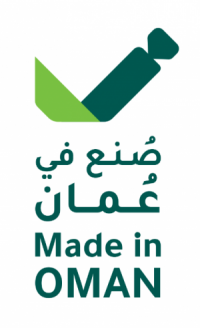The National Product Identity Logo
When inquiring about the symbol that represents Omani identity, consensus points to the Omani Khanjar, chosen for the values it embodies in its authenticity, significance, and its connection with the Sultanate of Oman, encompassing both the state and its people. The challenge lay not only in unifying Omanis around a single symbol they proudly identify with locally but also in communicating with the international consumer using a globally recognized icon. Hence, the Khanjar became the logo we adopted to represent what Oman produces, manufactures, and shares with the world. On the other hand, we found in the (Check) mark a strong representation of our confidence in our country’s products, symbolizing positivity and conveying a message to both the local and foreign audience, affirming the soundness of their choice in favour of Omani products. 
The core logo was constructed through the integration of the authentic Omani Khanjar and the positive (Check) mark, but in a contemporary, modern, and simplistic manner, infused with an industrial significance. The angles were adapted to introduce a friendly communicative aspect, aiming for openness with the audience. On a practical level, the clarity of the icon, its ease of recognition, and understanding were crucial, given the diverse range of products and industries—ranging from food to light and heavy manufacturing. These include products such as vegetables, fruits, dairy, textiles, cables, Luban (frankincense), and more, necessitating an icon that maintains its distinctiveness without becoming burdensome for manufacturers in its application.
As for the choice of colours, the choice was made from shades of green to enhance the depiction of the flourishing future laid by Omani products and industries. Additionally, the colour red was incorporated as a national symbol used in national occasions. The visual pattern was constructed using the logo itself in an abstract and flexible manner, allowing it to be resized based on the available space. This practice serves to reinforce the idea of identity, logo representation, and its presence in the recipient’s mind.
